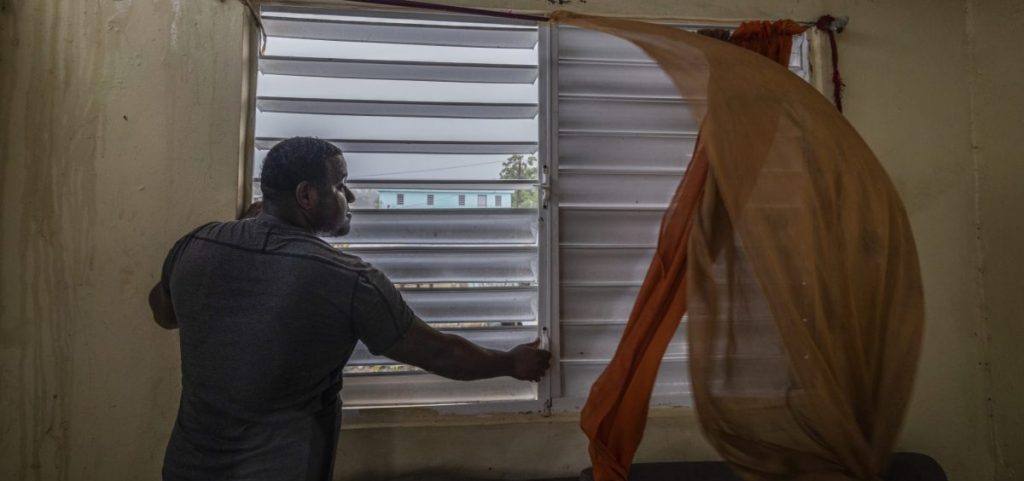News
All of Puerto Rico is without electricity as Hurricane Fiona pummels the island
By: Juliana Kim | NPR
Posted on:
WASHINGTON, D.C. (NPR) — Hurricane Fiona made landfall in southwestern Puerto Rico on Sunday afternoon, as the entire island continues to reel from the knockout of its electricity grid.
The Category 1 hurricane was predicted to produce dangerous landslides and heavy flooding on an already storm-battered island.
As of Sunday late afternoon, the storm was centered 10 miles west of Mayagüez, a community on Puerto Rico’s western coast, according to the National Hurricane Center. It had maximum sustained winds of 85 mph and was moving northwest at 9 mph. It is now making its way toward the Dominican Republic.
Fiona is expected to trigger 12 to 18 inches of rainfall in Puerto Rico and up to 30 inches across the island’s eastern and southern regions.
More than 1,400,000 customers — more than 3 million people — have lost electricity due to a transmission grid failure from the current hurricane, according to utility companies’ reports tracked by PowerOutage.US.
Luma Energy, the island’s private electric utility, says full restoration of power service on Puerto Rico “could take several days.”
Gov. Pedro Pierluisi wrote on Facebook that line workers will begin working to restore the system once conditions are safe. Restoring power will take at least days and possibly much longer depending on how much damage the storm inflicts on the grid.

The storm will move toward the Dominican Republic by Monday
The storm is headed toward the Dominican Republic and is poised to travel to the east of the Turks and Caicos Islands on Tuesday.
The flash flooding will likely be “life threatening and catastrophic” across Puerto Rico and the eastern Dominican Republic, according to officials monitoring the storm. The combination of a storm surge and the tide could produce rising waters up to three feet in the southern coast of the island.
So far, Fiona has wreaked havoc on the eastern Caribbean, damaging roads, destroying properties and killing person in the French territory of Guadeloupe, Sylvie Gustave Dit Duflo, an official for the region, wrote on Twitter.
The storm is also forecast to be potentially devastating for parts of the Dominican Republic, northern Haiti and the southern end of the Bahamas in the coming days.
A fragile power grid makes matters worse
It was not long ago when the island’s power grid was devastated by Hurricane Maria — a category 4 storm that caused about 3,000 deaths in 2017. More than 80% of the transmission and distribution system was ruined and the restoration process has been slow.
As a result, blackouts have been an ongoing issue on the island.
Leomar Rodríguez González, from Utuado, a town in central Puerto Rico, told NPR he and his family have been anxious as the scenes of heavy flooding and landslides reminds them of Hurricane Maria.
“I’m worried about a lot of things but in the moment, flooding is worrying me,” he said.
Rodríguez González said Maria devastated his family’s home and businesses. It’s why they have been preparing for the storm for several days: they stocked up on canned foods, bought extra batteries and trimmed trees near electric poles.
Every year since Maria, the Puerto Rican government has been promising it would be much better prepared for the next storm. This is considered the first real test of that promise.
The government’s response plan now includes making sure that backup generators are working at hospitals and stocking warehouses with food and cots and other essential supplies. But ensuring that the power grid would be better prepared to handle the storm fell short.
President Biden approved an emergency declaration for Puerto Rico on Sunday, which authorizes the Department of Homeland Security and the Federal Emergency Management Agency to coordinate disaster relief efforts.
Adrian Florido contributed reporting.
9(MDU1ODUxOTA3MDE2MDQwNjY2NjEyM2Q3ZA000))

